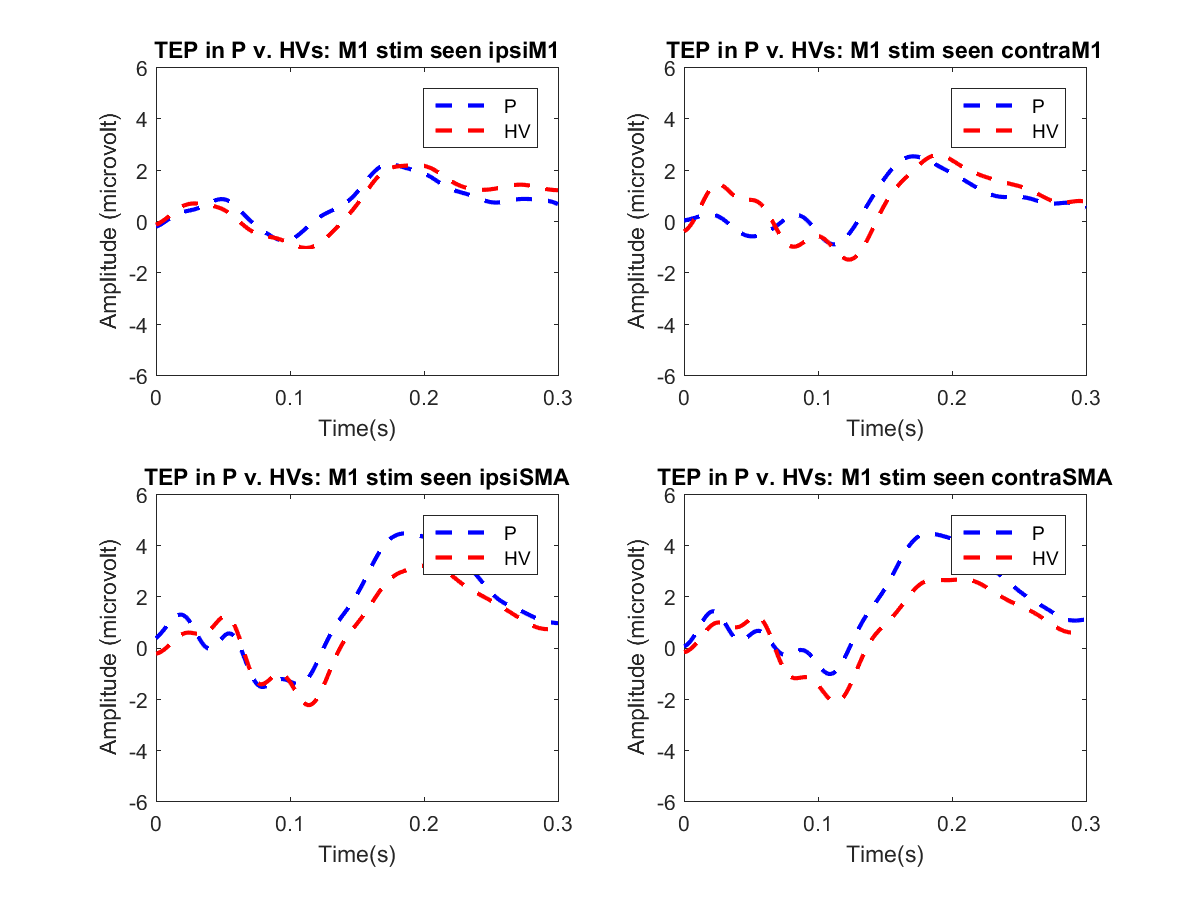Session Information
Date: Thursday, June 8, 2017
Session Title: Dystonia
Session Time: 1:15pm-2:45pm
Location: Exhibit Hall C
Objective: To probe cortical excitability and inhibition in primary motor cortex and supplementary motor area (SMA) in cervical dystonia
Background: Cervical Dystonia (CD) is characterized by abnormal postures and involuntary muscle contractions of the head and neck region. Although CD is one of the most common focal dystonias, the understanding of its pathophysiology is limited. A previous transcranial magnetic stimulation (TMS) study using double pulse stimulation on the motor cortex found increased intracortical facilitation in CD compared to healthy volunteers (HVs). TMS can be combined with electroencephalography (EEG) to better understand cortical excitability. TMS-EEG elicits both excitatory and inhibitory TMS-evoked potentials (TEPs) and can be examined in both motor and non-motor regions.
Methods: TMS-EEG was performed in 13 CD patients (59.4 ± 13.3 yr) and 13 age-and-sex-matched HVs. Single TMS with a monophasic pulse was delivered to the M1 region while the patients were asked to rest. HVs were asked to mimic the head rotation of the matched patient during rest. One hundred TMS pulses were delivered to the M1 contralateral to the side of head rotation at either the C3 or C4 electrodes. All patients and HVs were later separately combined such that EEG results could be viewed at the M1 and SMA electrodes (FC1 and FC2) ipsilateral and contralateral to the side of stimulation. All filtering and analysis was done using eeglab and fieldtrip in MATLAB.
Results: We observed previously defined TEP peaks (P30, N45, P60, N100, P180) in both HVs and CD patients [figure 1]. With M1 stimulation, these peaks were best seen in bilateral SMA in both HVs and patients [figure 1]. In the SMA, we found decreased N100 and increased P180 amplitudes in patients compared to HVs [figure 1].
Conclusions: To our knowledge, this is the first TMS-EEG recording over SMA in dystonia patients. The decreased N100 and increased P180 amplitudes in the SMA suggests increased SMA excitability that could be pathologic or compensatory in cervical dystonia. It is thought that the N100 and P180 peaks are modulated by presynaptic and postsynaptic GABA B receptors, suggesting its role in pathophysiology of cervical dystonia.
To cite this abstract in AMA style:
S. Singh, H. Cho, N. Thirugnanasambandam, H. Shitara, O. Panyakaew, M. Hallett. Exploring the neurophysiology of cervical dystonia using TMS-EEG [abstract]. Mov Disord. 2017; 32 (suppl 2). https://www.mdsabstracts.org/abstract/exploring-the-neurophysiology-of-cervical-dystonia-using-tms-eeg/. Accessed January 2, 2026.« Back to 2017 International Congress
MDS Abstracts - https://www.mdsabstracts.org/abstract/exploring-the-neurophysiology-of-cervical-dystonia-using-tms-eeg/

